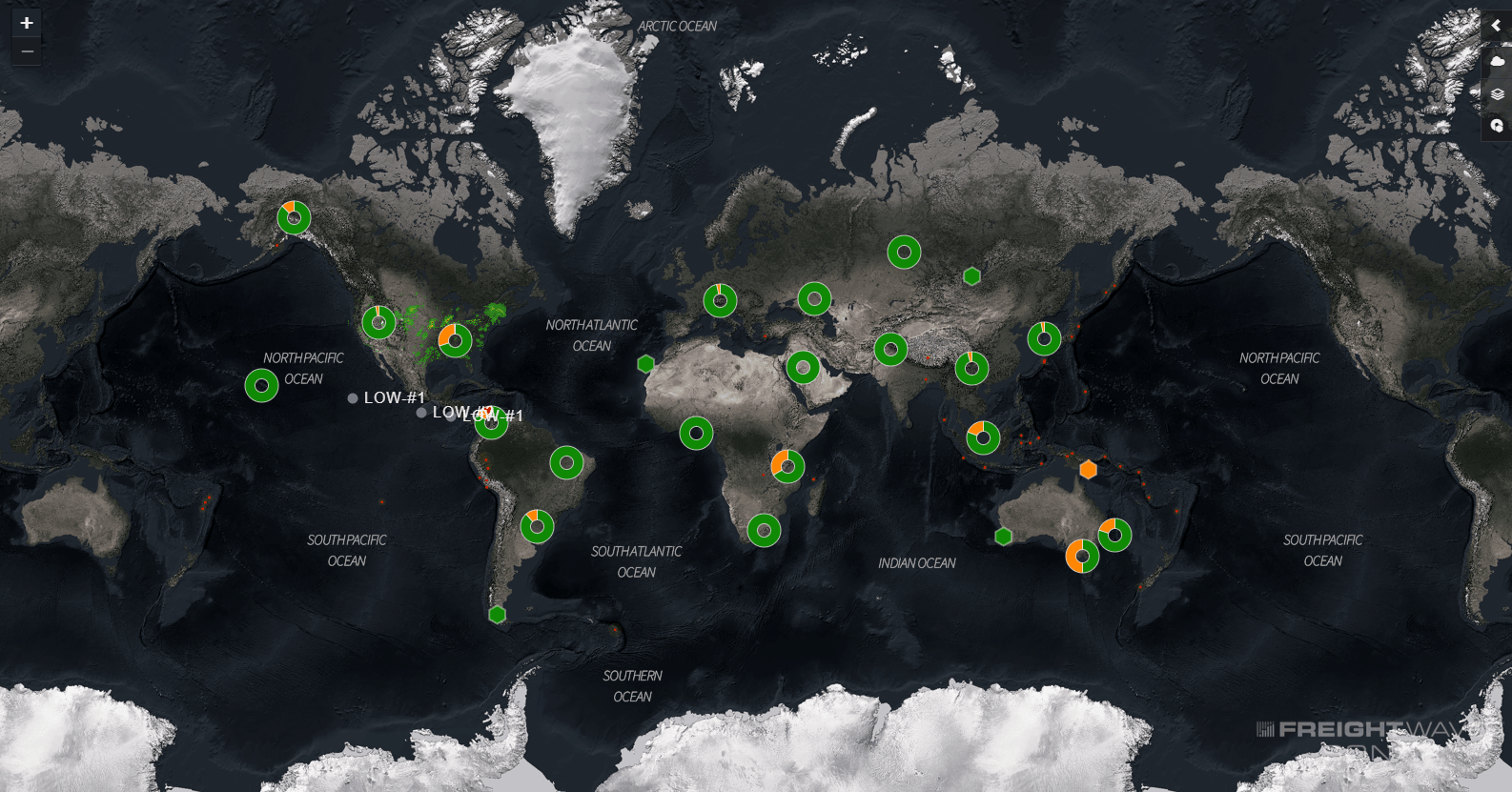Almost every day there are reports warning of severe weather events across the United States and in other parts of the world. About two weeks ago, while listening to one of those reports I thought to myself, “I wonder how easy it is for someone responsible for supply chain operations at any company to proactively get a sense of where there may be severe weather events worth worrying about?” I couldn’t think of any.
Since that day, whenever I have had some free time in my day, I go to Google to see if I can find something that provides a simple to use and holistic source of data and information to enable all types of businesses to make preemptive decisions related to their supply chain operations.
The closest I have found is FreightWaves’ SONAR – specifically, for the particular issue I am thinking about, the Critical Events view.

According to Zurich Insurance Group, an extreme weather event is an unexpected weather incident that is at the extremes of historical ranges for a specific location. The record amounts of precipitation that led to flooding in the Midwest region of the United States in March, and the flooding earlier this month, again in the same region, are both extreme weather events. As bad as the problem is now, it has been getting worse, and will continue to get worse.
In “Economic Losses, Poverty & Disasters: 1998-2017,” the United Nations Office For Disaster and Risk Reduction (UNDRR) and the Centre for Research on the Epidemiology of Disasters (CRED) state:
“The report finds that between 1998 and 2017, climate-related and geophysical disasters killed 1.3 million people and left a further 4.4 billion injured, homeless, displaced or in need of emergency assistance. While the majority of fatalities were due to geophysical events, mostly earthquakes and tsunamis, 91 percent of all disasters were caused by floods, storms, droughts, heatwaves and other extreme weather events.
In 1998-2017, disaster-hit countries experienced direct economic losses valued at US$ 2,908 billion, of which climate-related disasters caused US$ 2,245 billion or 77 percent of the total. This is up from 68 percent (US$ 895 billion) of losses (US$ 1,313 billion) reported between 1978 and 1997. Overall, reported losses from extreme weather events rose by 151 percent between these two 20-year periods.”
The ability to know where critical weather events may be developing so that a business can adapt its plans for moving goods around is quite important. Severe weather events simultaneously increase costs and decrease revenues.
As I write this article, FreightWaves SONAR is showing me:
● 591 Severe Weather Watches and Warnings around the world
● 5 Severe Thunderstorm Outlooks
● 2 Tropical Cyclones
● 40 Earthquakes
● 2 Wildfires
FreightWaves SONAR also allows me to drill down further; to get local data wherever there’s an asset providing data to the system. I drilled down to see more detail from data assets and sources in Kaduna, Port Harcourt and Warri – cities in Nigeria. It’s the beginning of the rainy season in West Africa so I may come back periodically to see what the data says.
In addition, I can zoom in on parts of the United States and identify the specific cities that are most likely to be hit by the storms that are mentioned daily in the news. For example, as I write this article, I can see that there are 160 different assets collectively warning of wind gusts, severe weather, hail, flooding and tornadoes across the Midwest. If I were expecting a shipment of goods from that region, I could make contingency plans to account for these developments.
FreightWaves isn’t the only company building a platform of this sort. In January 2016, IBM announced that it had acquired The Weather Company. Presumably, with the data that it has gained from that acquisition, its Watson Supply Chain platform is better placed to help IBM’s enterprise clients take proactive measures to prevent disruptions to their business operations.
The power of systems like the ones I have described will be realized when they are as ubiquitous for businesses as Google Maps and Waze are for consumers. The technology keeps getting better, and the need keeps becoming more acute. The days when such information is only available to big companies that can afford to pay significant sums each year for such data and information are now behind us.
